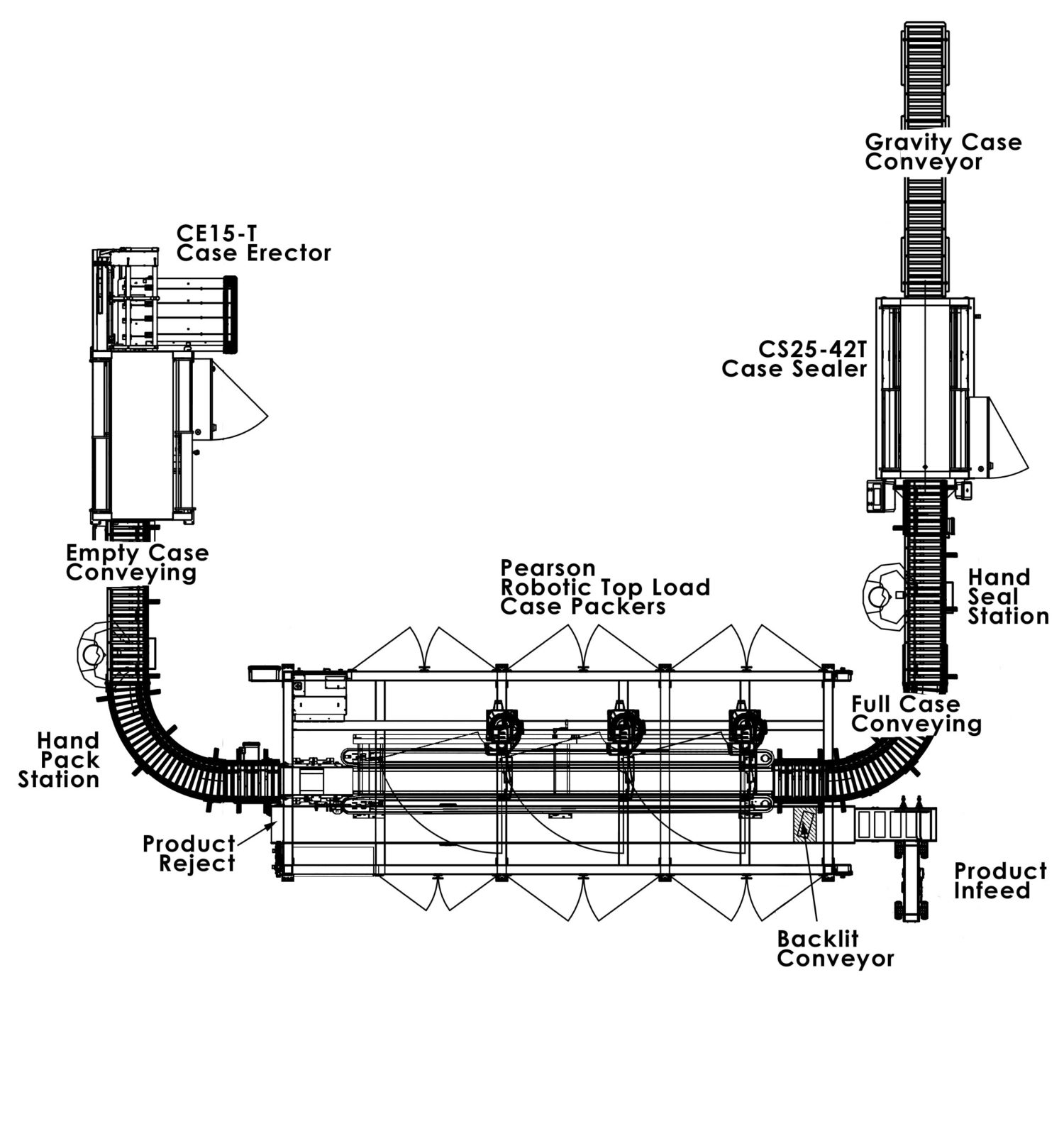Knockdown regular slotted containers (RSCs) are stacked into the extendable horizontal case magazine of the CE15-T. Blank suction cups advance to select the case, which is then indexed into the case feed rollers and transferred into the case flight system. Opposed vacuum cups engage the case and a pneumatic-operated set-up arm erects the case. The minor flaps are then closed and sealed with pressure sensitive tape. Empty erected cases exit the machine upright to be conveyed downstream to three FANUC six-axis M10 RTL Case Packers.
While cases are being erected, a Flexlink prefeed conveyor transports product—seam up and short dimension leading—through the product conveyor. A regenerative vacuum blower jump transfers product onto the vacuum infeed conveyor. As the product passes over the backlit conveyor with translucent belting, the FANUC vision system determines the position and orientation of the product as it moves upstream toward the packers. Rejected product runs off the end of the product conveyor and collects in a dishcharge bin.
Three RTLS using custom end-of-arm tools (EOATs) fitted with vacuum cups pick in groups of two, three or four. The product is rotated 90 degrees and, using articulated motion to eliminate snagging, placed in a single-layer pattern to maximize space. Each EOAT allows operators to modify pack sizes and patterns, reducing changeover time.
Full cases are discharged from the cell via the full case conveyor and conveyed to the CS25-42T Case Sealer. The minor and major flaps are folded and the case is sealed with pressure sensitive tape. Finally, the cases are conveyed to an unpowered gravity conveyor where they are transported to the palletizing area for shipping preparation.



